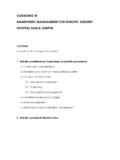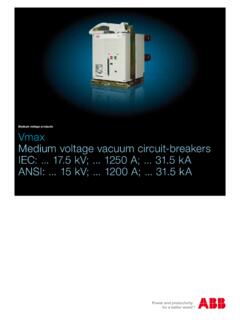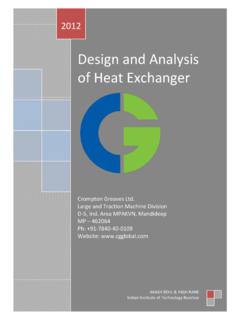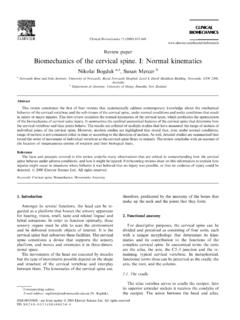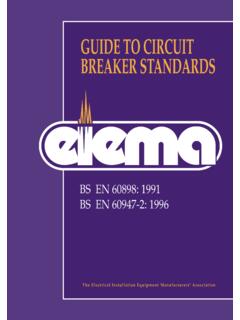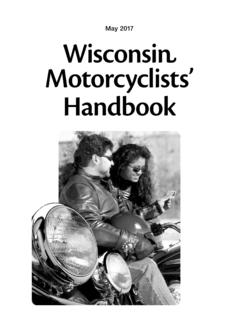Transcription of Design and Fabrication of Compressed Air Engine.
1 Design and Fabrication of Compressed Air engine . Final Year Project For the award of Bachelor of Technology (B. Tech.) in Mechanical Engineering Submitted By: Manik Gupta (2006 EME21) Vishavjeet Singh (2006 EME26) Harish Gupta (2006 EME29) Sudhanshu Rometra (2006 EME37) Zorawar Singh (2006 EME49) Under the Supervision of: Mr. Shahu (Lecturer) School of Mechanical Engineering Shri Mata Vaishno Devi University, Katra (J&K), India.
2 April, 2010. CERTIFICATE This is to certify that the thesis entitled " Design and Fabrication of Compressed Air engine is being submitted by Manik Gupta , Zorawar Singh, Sudhanshu Rometra, Harish Gupta, Vishavjeet Singh to School of Mechanical Engineering, College of Engineering, Shri Mata Vaishno Devi University, Katra (J&K), for the award of the Bachelor of Technology in Mechanical, is a bonafide work carried out by them under my supervision and guidance. The results obtained by us have not been submitted to any other university or institute, either in part or in full, for the award of any other degree or diploma.
3 Guide: Director: Mr. Shahu Dr. (Lecturer) School Of Mechnical Engineering School of Mechanical Engineering ACKNOWLEDGEMENT We are highly thankful to Mr. Shahu of Mechanical Engineering Department, University, Katra for his efficient guidance and support. He always encouraged and inspired us a lot to work hard and get through the problems.
4 We extend our gratitude to him for being the guiding force. His ever increasing helping nature needs a special mention. We would also like to thank all the faculty of School of Mechanincal Engineering, to provide us all the help that we required at different stages of completion of our project work. Last, but not the least , we would like to thank our friends for their encouragement and help which they gave us to overcome the difficulties at various stages of our project work.
5 University April, 2010 Contents: Page no. 1. Introduction Compressed air engine basics 2 History 3 Applications 5 Advantages 6 Disadvantages 7 2. Literature Review Description of Mechanical Components 10 Description of Electronic Components 17 Study of Compressed Air engine and its Working 26 3. Design And Fabrication Design of Piston Cylinder 29 Design of Connecting Rod 34 Fabrication of Model 42 4.
6 Working of Model 48 5. Problems Faced 50 6. Solutions Adapted 50 7. Conclusion 51 1 Chapter 1: Introduction Compressed Air engine Basics History Applications Advantages Disadvantages 2 Compressed Air engine Basics: A Compressed -air engine is a pneumatic actuator that creates useful work by expanding Compressed air. A Compressed -air vehicle is powered by an air engine , using Compressed air, which is stored in a tank.
7 Instead of mixing fuel with air and burning it in the engine to drive pistons with hot expanding gases, Compressed air vehicles (CAV) use the expansion of Compressed air to drive their pistons. They have existed in many forms over the past two centuries, ranging in size from hand held turbines up to several hundred horsepower. For example, the first mechanically-powered submarine, the 1863 Plongeur, used a Compressed -air engine . The laws of physics dictate that uncontained gases will fill any given space.
8 The easiest way to see this in action is to inflate a balloon. The elastic skin of the balloon holds the air tightly inside, but the moment you use a pin to create a hole in the balloon's surface, the air expands outward with so much energy that the balloon explodes. Compressing a gas into a small space is a way to store energy. When the gas expands again, that energy is released to do work. That's the basic principle behind what makes an air car go. Some types rely on pistons and cylinders, others use turbines.
9 Many Compressed air engines improve their performance by heating the incoming air, or the engine itself. Some took this a stage further and burned fuel in the cylinder or turbine, forming a type of internal combustion engine . One manufacturer claims to have designed an engine that is 90 percent efficient. Compressed air propulsion may also be incorporated in hybrid systems, , battery electric propulsion and fuel tanks to recharge the batteries. This kind of system is called hybrid-pneumatic electric propulsion.
10 Additionally, regenerative braking can also be used in conjunction with this system. 3 History: a) The first Compressed -air vehicle was devised by Bompas, a patent for a locomotive being taken out in England in 1828. There were two storage tanks between the frames, with conventional cylinders and cranks. It is not clear if it was actually built. (Knight, 1880) b) The first recorded Compressed -air vehicle in France was built by the Frenchmen Andraud and Tessie of Motay in 1838.
